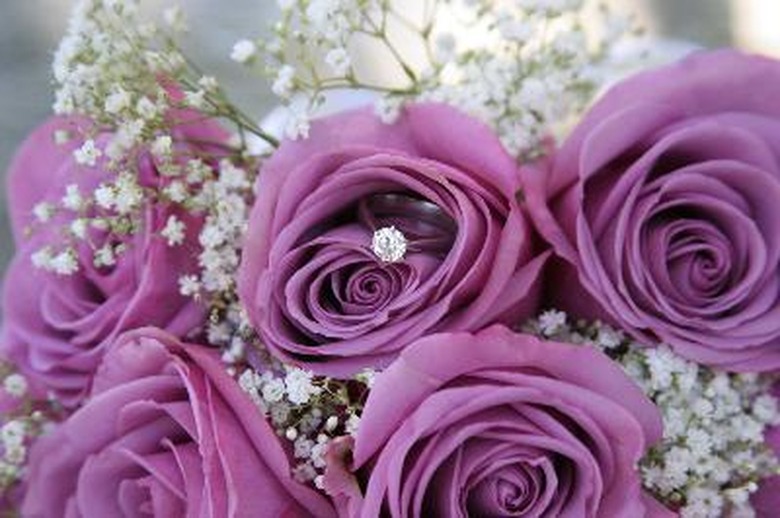Natural Colors Of Roses
We may receive a commission on purchases made from links.
Rose (Rosa spp.) breeders have been hybridizing species, crossing lineages and tinkering with rose genetics for centuries — long before "genetics" was even a buzz word. As a result of their efforts, roses come in a stunning variety of colors and color combinations. Even the shape of the blooms or the number of petals can vary dramatically from one cultivar to the next.
What is the natural color of roses? In truth, virtually all rose colors are "natural." Only shades of blue cannot be produced naturally by a rose plant, so blue roses are dyed that color before being sold. Aside from blue, all other rare rose colors are linked to recessive genes and have only appeared through careful, selective breeding.
Perhaps the best question to ask is: What color were the foundation stock roses chosen by breeders centuries ago? Studying the history of the rose and the most common colors found in modern wild roses provides an answer: White, red and pink are the most common rose colors. Shades of yellow, orange, purple and even brown and green are most often seen in domestic cultivars, not in wild roses.
Ancient Rose Colors
Ancient Rose Colors
Roses are believed to have first been cultivated in China in 500 B.C. but eventually spread to other regions, including the ancient civilizations in Egypt, Greece and Rome. The roses grown at this time were believed to be Rosa gallica (USDA zones 3-8), which comes in shades of red, pink, white and purple as well as marbled combinations thereof. A white or pink hybrid of Rosa gallica and Rosa moschata (zones 5-9) called the Damask rose (Rosa x damascena, zones 4-8)) was also popular during this era.
The War of the Roses
The War of the Roses
During the Middle Ages, the alba (alba means "white") rose (Rosa x alba 'Semi-Plena,' zones 4-8) gained notoriety. An alternative name for this rose is "White Rose of York" because the English House of York used the image of a white rose as its heraldic emblem. In contrast, a red rose was the symbol of the rival House of Lancaster. Their 15th-century conflict was dubbed the "War of the Roses."
The War of the Roses resulted in a union of the two houses through marriage. The two emblems were fused to form the Tudor rose: a bloom with white central petals and red outer petals. The Double Delight rose (Rosa 'Andeli,' zones 5-9) looks exactly like the heraldic Tudor rose, demonstrating just how much color variation is possible when breeding roses.
Although it's possible that the white and red colors were chosen for purely symbolic purposes, the fact that the Houses of York and Lancaster chose white and red roses instead of pink, orange, yellow or purple roses could indicate that those colors were more common or natural.
Wild Rose Colors
Wild Rose Colors
Dozens of species belong to the Rosa genus, and some of them have never been hybridized by humans. Wild roses include Rosa carolina (zones 4-9), Rosa palustris (zones 4-9), Rosa woodsii (zones 3-8), Rosa nutkana (zones 5-9) and Rosa californica (zones 6-9). Each of these is pink, suggesting that pink is the most natural color of all the rose colors. However, other wild roses include the white Rosa multiflora (zones 5-9) and the red and white Rosa rugosa (zones 2-7).
